tp-link DS-PMA-C++ SFP GPON Class C++ Module
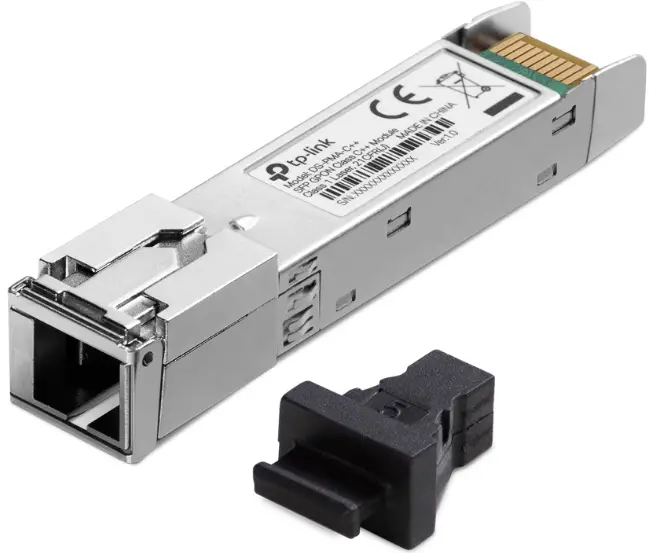
Product Information
Specifications
- Normal Wave Length: XGS-PON: Tx: 1577 nm, Rx: 1270 nm; XG-PON: Tx: 1577 nm, Rx: 1270 nm; GPON: Tx: 1490 nm, Rx: 1310 nm
- Standards and Protocols: ITU-T G.984.2 Amendment 2
- Cable Fiber Type: Single-mode Fiber
- Max. Cable Length: 20 km
- Data Rate: XGS-PON: Tx: 9953 Mbit/s, Rx: 9953 Mbit/s; XG-PON: Tx: 9953 Mbit/s, Rx: 2488 Mbit/s; GPON: Tx: 2488 Mbit/s, Rx: 1244 Mbit/s
- Tx Power: XGS-PON: +5 dBm ~ +8 dBm; XG-PON: +5 dBm ~ +8 dBm; GPON: +3 dBm ~ +7 dBm
- Rx Sensitivity: XGS-PON: >-8.0 dBm; XG-PON: >-10.0 dBm; GPON: >-12.0 dBm
- Extinction Ratio: XGS-PON: 8.2 dB
- Optical Power Port Type: Combo PON, SC
- Power Support: 3.3 V (-12.0 dBm)
- Safety & Emission: GPON SFP, SC/UPC 3.3 V (-12.0 dBm)
- DDM SFP-MSA Hot Swappable
Product Usage Instructions
Install the Transceiver
- Wear an ESD-preventive wrist or ankle strap to prevent ESD damage to the transceiver.
- Insert the transceiver into the slot and firmly press it into place.
Remove the Transceiver
- Wear an ESD-preventive wrist or ankle strap to prevent ESD damage to the transceiver.
- Disconnect the network fiber-optic cable from the transceiver.
- Remove the protective dust plug from the transceiver.
- Pull the safety latch downwards to release the transceiver, and then pull it out from the slot.
- Plug a fiber-optic cable into the transceiver. Note that the transceiver works without any additional configuration.
- Reinstall the protective dust plug in the transceiver’s optical bores and place it on an antistatic mat or a static shielding bag.
- Note: Do not touch the output pins on the transceiver with your hand.
- Always keep the protective dust plug on the transceiver’s optical bores until you are ready to make a connection.
- Caution: DO NOT point or stare directly into the beam or the optical port of the transceiver when it is operating, as this can injure your eyesight.
Install the Transceiver
- Wear an ESD-preventive wrist or ankle strap to prevent ESD damage to the transceiver.
- Insert the transceiver into the slot and firmly press it into place.
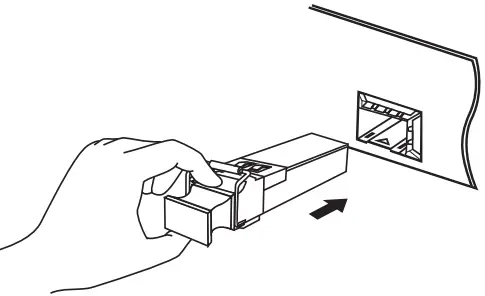
- Remove the protective dust plug from the transceiver.
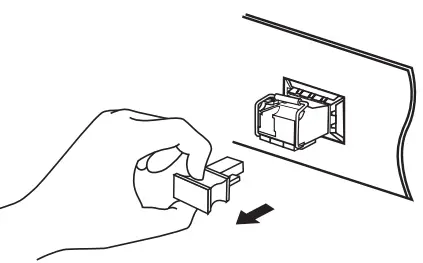
- Plug a fiber-optic cable into the transceiver. Note that the transceiver works without any additional configuration.
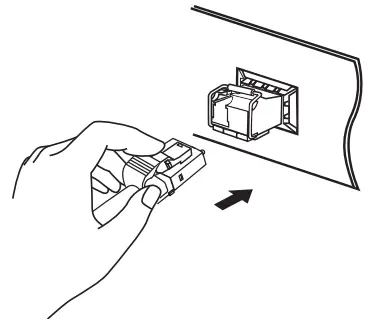
Remove the Transceiver
- Wear an ESD-preventive wrist or ankle strap to prevent ESD damage to the transceiver.
- Disconnect the network fiber-optic cable from the transceiver.

- Pull the safety latch downwards to release the transceiver, and then pull it out from the slot.

- Reinstall the protective dust plug in the transceiver’s optical bores and place it on an antistatic mat or a static shielding bag.
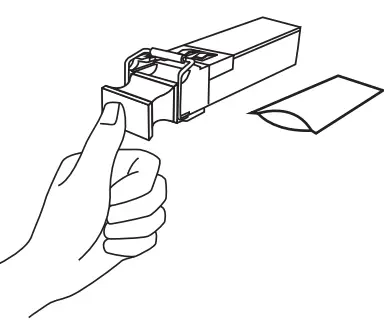
Note:
- Do not touch the output pins on the transceiver with your hand.
- Always keep the protective dust plug on the transceiver’s optical bores until you are ready to make a connection.
- Caution: DO NOT point or stare directly into the beam or the optical port of the transceiver when it is operating, as this can injure your eyesight.
Connection

Specifications
General Specifications
| Normal | DS-PMA-Combo C+ | DS-PMA-C++ | DS-PMA-C+ |
| Wave Length | XGS-PON: Tx: 1577 nm, Rx: 1270 nm XG-PON: Tx: 1577 nm, Rx: 1270 nm GPON: Tx: 1490 nm, Rx: 1310 nm | GPON: Tx: 1490 nm, Rx: 1310 nm | GPON: Tx: 1490 nm, Rx: 1310 nm |
| Standards and Protocols | ITU-T G.984.2 Amendment 2 | ITU-T G.984.2 Amendment 2 | ITU-T G.984.2 Amendment 2 |
| Cable | Single-mode Fiber | Single-mode Fiber | Single-mode Fiber |
| Fiber Type | 9/125 um Single-mode | 9/125 um Single-mode | 9/125 um Single-mode |
| Max. Cable Length | 20 km | 20 km | 20 km |
| Data Rate | XGS-PON: Tx: 9953 Mbit/s, Rx: 9953 Mbit/s XG-PON: Tx: 9953 Mbit/s, Rx: 2488 Mbit/s GPON: Tx: 2488 Mbit/s, Rx: 1244 Mbit/s | GPON: Tx: 2488 Mbit/s, Rx: 1244 Mbit/s | GPON: Tx: 2488 Mbit/s, Rx: 1244 Mbit/s |
| Tx Power | XGS-PON: +5 dBm ~ +8 dBm
XG-PON: +5 dBm ~ +8 dBm GPON: +3 dBm ~ +7 dBm |
GPON: +5 dBm ~ +10 dBm | GPON: +3 dBm ~ +7 dBm |
| Rx Sensitivity | XGS-PON: <-29.0 dBm
XG-PON: <-30.5 dBm GPON: <-32.0 dBm |
GPON: <-33.0 dBm | GPON: <-32 dBm |
| Extinction Ratio | XGS-PON: >8.2 dB
XG-PON: >8.2 dB GPON: >8.2 dB |
GPON: >8.2 dB | GPON: >8.2 dB |
| Rx Saturation Optical Power | XGS-PON: >-8.0 dBm
XG-PON: >-10.0 dBm GPON: >-12.0 dBm |
GPON: >-12.0 dBm | GPON: >-12.0 dBm |
| Port Type | Combo PON, SC | GPON SFP, SC/UPC | GPON SFP, SC/UPC |
| Power Support | 3.3 V (<±5%) | 3.3 V (<±5%) | 3.3 V (<±5%) |
| Safety & Emission | FCC 47 CFR Part 15, Class B CE, Class B | FCC 47 CFR Part 15, Class B CE, Class B | FCC 47 CFR Part 15, Class B CE, Class B |
| DDM | Yes | Yes | Yes |
| SFP-MSA | Yes | Yes | Yes |
| Hot Swappable | Yes | Yes | Yes |
Safety Information
- Keep the device away from water, fire, humidity, or hot environments.
- Keep the device away from fire or hot environments. DO NOT immerse in water or any other liquid.
- Do not attempt to disassemble, repair, or modify the device.
- Avoid using this product during an electrical storm. There may be a remote risk of electric shock from lightning.
- Do not point or stare directly into the beam or the optical port of the transceiver when it is operating, as this can injure your eyesight.
EU Declaration of Conformity
 TP-Link hereby declares that the device is in compliance with the essential requirements and other relevant provisions of Directives 2014/30/EU, 2014/35/EU, 2011/65/EU, and (EU)2015/863.
TP-Link hereby declares that the device is in compliance with the essential requirements and other relevant provisions of Directives 2014/30/EU, 2014/35/EU, 2011/65/EU, and (EU)2015/863.- The original EU declaration of conformity may be found at https://www.tp-link.com/en/support/ce/
UKCA Declaration of Conformity
- TP-Link hereby declares that the device is in compliance with the essential requirements and other relevant provisions of the Electromagnetic Compatibility Regulations 2016 and Electrical Equipment (Safety) Regulations 2016.
- The original UK declaration of conformity may be found at https://www.tp-link.com/support/ukca/
- For technical support and other information, please visit https://www.tp-link.com/support or simply scan the QR code.
- ©2025 TP-Link 7106512041 REV1.3.0

Frequently Asked Questions
- Q: How do I know if the transceiver is properly installed?
- A: You can check if the transceiver is properly installed by ensuring it is firmly pressed into place and that all connections are secure.
- Q: Can I use this transceiver with any type of fiber-optic cable?
- A: No, this transceiver is designed for use with single-mode fiber-optic cables only.
Documents / Resources
 |
tp-link DS-PMA-C++ SFP GPON Class C++ Module [pdf] Installation Guide DS-PMA-Combo C, DS-PMA-C, DS-PMA-C, DS-PMA-C SFP GPON Class C Module, DS-PMA-C, SFP GPON Class C Module, Class C Module, C Module |
